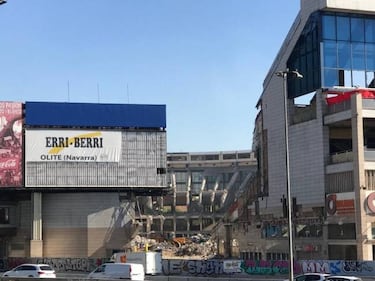Atlético: Calderón demolition brings feelings of real sadness
Making my way back home one evening, I drive through the tunnel on Madrid's M-30 ring road, a construction which, while it was being built, led me to curse the city's then-mayor...
Making my way back home one evening, I drive through the tunnel on Madrid's M-30 ring road, a construction which, while it was being built, led me to curse the city's then-mayor, Alberto Ruiz Gallardón. Ever since the tunnel was finished, though, I must admit I've been extremely thankful for it. Anyway, as I'm heading through it, I reach a bit of a traffic jam; the right-hand lane is out of action, a sign announces. I move to the left, and sit and wait. I've got a fair idea what's going on, and my suspicions prove correct. The road is partly cut off where it passes underneath the old Estadio Vicente Calderón, because they're pulling the stadium down now. I knew the process had started, but I still hadn't seen it with my own eyes.
Related stories
I felt a real pang of sadness as I looked at the Calderón's now semi-destroyed stands. Soon enough, the space will have been turned into a pretty park with a fountain, but right now what sits there is, as the writer Mario Benedetti used to call an empty stadium, the skeleton of a crowd. A skeleton already half-dismembered, whose age-old geometric harmony is no more. I went to the ground many times. I saw Amancio score a wonderful goal there, which he celebrated by doing a belly-slide on the wet pitch, like a sea plane splashing down. I witnessed the forward line of Ufarte, Luis, Gárate, Adelardo and Collar there - a quintet who brought it home to me that there was quality football beyond the Bernabéu.

I'm old enough to have seen Atlético play at the original Estadio Metropolitano, at the end of the Avenida de la Reina Victoria. Atleti got themselves a real upgrade when they swapped that traditional, and somewhat dirty, old ground with the Calderón, where everyone had a seat. Now they've taken another step forward with their move to the Wanda Metropolitano. It's a much better stadium; there can be no comparison, really. But it still brings about a tinge of sorrow when you see the demolition taking place by the M-30. Hopefully the dusty ruin we're seeing now is transformed into the park we've been promised before long, so we can close the book on this period of mourning and pass by the site without feeling such sadness.
